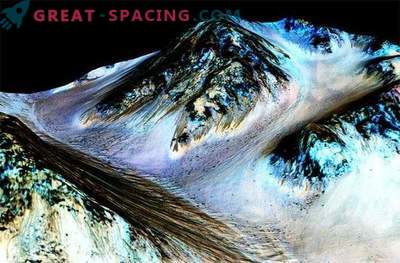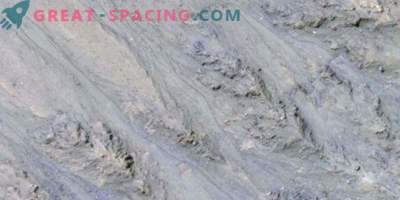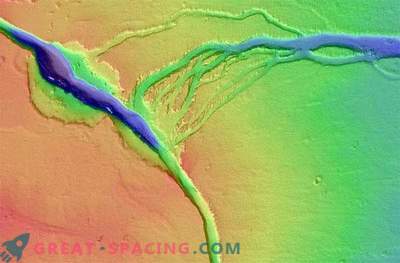
The results of experiments in terrestrial laboratories seem to confirm the theory that the dark lines on the Martian slopes are created by water, although in a very strange way, scientists said on Monday.
A team from France, Britain and the USA built a model and simulated the conditions of Mars. It continues the 2015 study, which offers “the strongest evidence” for the existence of liquid water — the indispensable condition for life — on the Red Planet.
This conclusion has led many scientists to wrestle, because the low atmospheric pressure of Mars means that water does not exist for a long time in liquid form. It either boils or freezes.
The determination of water on the Red Planet is complicated by our limited understanding of natural processes in conditions so different from those on earth.
Last September, the team reported in the journal Nature Geoscience that the curious lines going down the slopes on the Martian surface in the summer can be streaked with “super-brine”.
They said they found evidence in the lines of hydrated salts of minerals that require water for their creation.
Lines, up to several hundred meters in length and, as a rule, up to five meters (16 feet) wide, appear on the slopes in the warmer months, extend, and then disappear as they cool.
"Under certain circumstances, liquid water was detected on Mars," NASA concluded at the time. For the latest study, also published in Nature Geoscience, researchers in the lab tried to explain how water can make lines.
The team, led by Marion Masse from the University of Nantes in France, included several authors of last year’s study.
They placed a block of ice on a 30 degree plastic slope covered with loose fine-grained sand, and allowed it to melt in a chamber in which summer Martian pressure and temperature were recreated.
They repeated the experiment under terrestrial conditions in order to compare the processes.
They found that with Martian pressure, the melting ice turns into a liquid that boils vigorously, flowing down the slope and absorbed by the sand.
Vapors of evaporating water eject sand grains upward, creating ridges that collapse when they become too steep, forming channels.
"The morphology produced on sandy slopes in these experiments is largely similar to the veins observed on Mars," commented Wouter Marra from the geoscience department of the University of Utrecht in the Netherlands.
"This process, in which water vapor causes grains of sand to jump out and cause tilt failures, may underlie some of the active landforms observed on the surface of Mars."











































